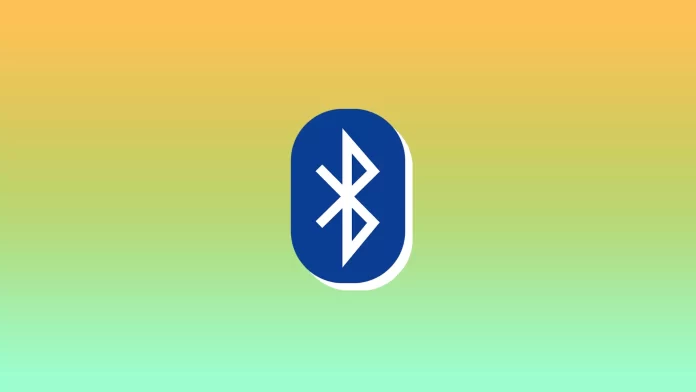If you have decided to update any of your everyday devices, you will probably come across different specs. One of the technologies that are present in almost every device today is Bluetooth.
Recently, however, people have started to encounter Bluetooth 5.3 technology. Not everyone understands the difference between the previous versions and why you should choose a device with Bluetooth 5.3. Let’s take a closer look at this technology, and I will explain the critical details of its functioning.
What is Bluetooth 5.3?
Bluetooth is a technology designed to transmit data wirelessly over short distances. This technology has long been commonplace; today, it is equipped with all modern smartphones and even such devices as TV or home appliances.
Thus Bluetooth 5.3 is the next update for this technology and has brought many improvements compared to the previous version. Most of these updates aim to allow you to use Bluetooth with several devices simultaneously comfortably. For example, when you connect multiple headphones to your smartphone. Or if you must connect your keyboard and mouse to your computer simultaneously.
If we talk about more specific improvements, Bluetooth 5.3 has evolved in 4 main areas. The first thing you should pay attention to is that Bluetooth 5.3 has received the so-called “Periodic Advertising Enhancement” with the improvement of this technology, Bluetooth devices that send the same information several times no longer burden the receiving device. With Bluetooth 5.3, all duplicates will be discarded immediately. It also provides a higher level of power saving for the receiving devices.
Also, Bluetooth 5.3 has become more secure. Improvements to better control the size of the encryption keys used to protect data. The correspondence between transmitter and receiver is significantly reduced so that a minimum key length can be created.
Another improvement is the connection sub-rating feature. It allows devices to switch faster between low and high-duty cycles. This is needed, for example, if your device is connected to a smartphone and is in sleep mode and you need to activate it abruptly. With Bluetooth 5.3, the activation will happen much faster.
Also, the channel classification has been improved. This improvement should increase the speed and bandwidth of the data channels. It has made it so that different devices now perform channel classification when data packets are transmitted on different frequencies. So that the probability of a packet collision is now minimal.
Is Bluetooth 5.3 better than Bluetooth 5.2 or Bluetooth 5.0?
If you have found several devices with different Bluetooth protocols, such as Bluetooth 5.0, Bluetooth 5.2, or Bluetooth 5.3, which one would you choose instead? The answer is not clear-cut. Since these technologies are minor updates to Bluetooth 5.0, this was the last major update to the Bluetooth protocol compared to Bluetooth 4.0. The new technology has twice the file transfer rate and four times the range.
The updates of Bluetooth 5.1 and Bluetooth 5.2 are smaller versions needed to improve various small details. Thus Bluetooth 5.1 has improved the ability to locate devices, allowing them to know the location of other devices to which they are connected. This is to determine the direction of where the signal is coming from.
After that came the Bluetooth 5.2 update, which focused entirely on improving the sound quality and energy efficiency of all devices connected for audio functions. It’s perfect if you’re interested in Bluetooth headphones.
As I described above, Bluetooth 5.3 offers improved power efficiency and reduced interference when connected. Is Bluetooth 5.3 better than its predecessors? Sure it is better and transmits a much better signal than previous versions. Still, suppose the variation between different versions of the technology will significantly affect the price of the device you want to buy. In that case, you don’t necessarily have to chase the newest Bluetooth 5.3. In practice, it offers almost the same level of connectivity as any other version of Bluetooth 5, but with some improvements.
What other Bluetooth versions are there?
If you are still wondering what other versions of Bluetooth there are, I can suggest that you look at all versions of Bluetooth since its inception so that you can better understand how much the technology has evolved and how much progress has been made by Bluetooth 5.3:
- Bluetooth 1.0 Was released back in 1999. The first version of Bluetooth had relatively poor connection and security issues, so it is not used in modern devices.
- Bluetooth 1.1 Was the first major update released in 2002. It was much more stable, and the transmission speed was increased to 721 kbps.
- Bluetooth 1.2 Was the next update in 2003 and is the last update of Bluetooth 1 that improved the connection and reduced the interference.
- Bluetooth 2.0 This is the second major version of Bluetooth, released in 2004. It is also backward compatible with Bluetooth 1.2. The data transfer speed was increased to 2Mbps.
- Bluetooth 2.1 This version was released three years later, in 2007. This update allowed one device to connect to another automatically without asking for a pin code.
- Bluetooth 3.0 The next major update for Bluetooth was released in 2009a. With it, data transfer rates of up to 24 Mbit/s became possible.
- Bluetooth 4.0 Is one of the essential Bluetooth updates you can find on current Bluetooth devices. It was released in 2010 and began to fight excessive battery consumption thanks to Bluetooth Low Energy technology. Therefore, this technology can be found in the most compact devices.
- Bluetooth 4.1 Is a minor update that appeared in 2013. It allowed communication between small devices without intermediaries.
- Bluetooth 4.2 Is the latest update before Bluetooth 5.0, which I wrote about above. It was launched in 2014 and implemented IPv6 to allow direct connection over the Internet.
In mid-2016, the world saw Bluetooth 5.0 as the most common standard on today’s devices. So far, no new technology has been invented to allow even faster and smoother data transfer. However, quite a lot of time has passed, and perhaps the next update will not be extended.




